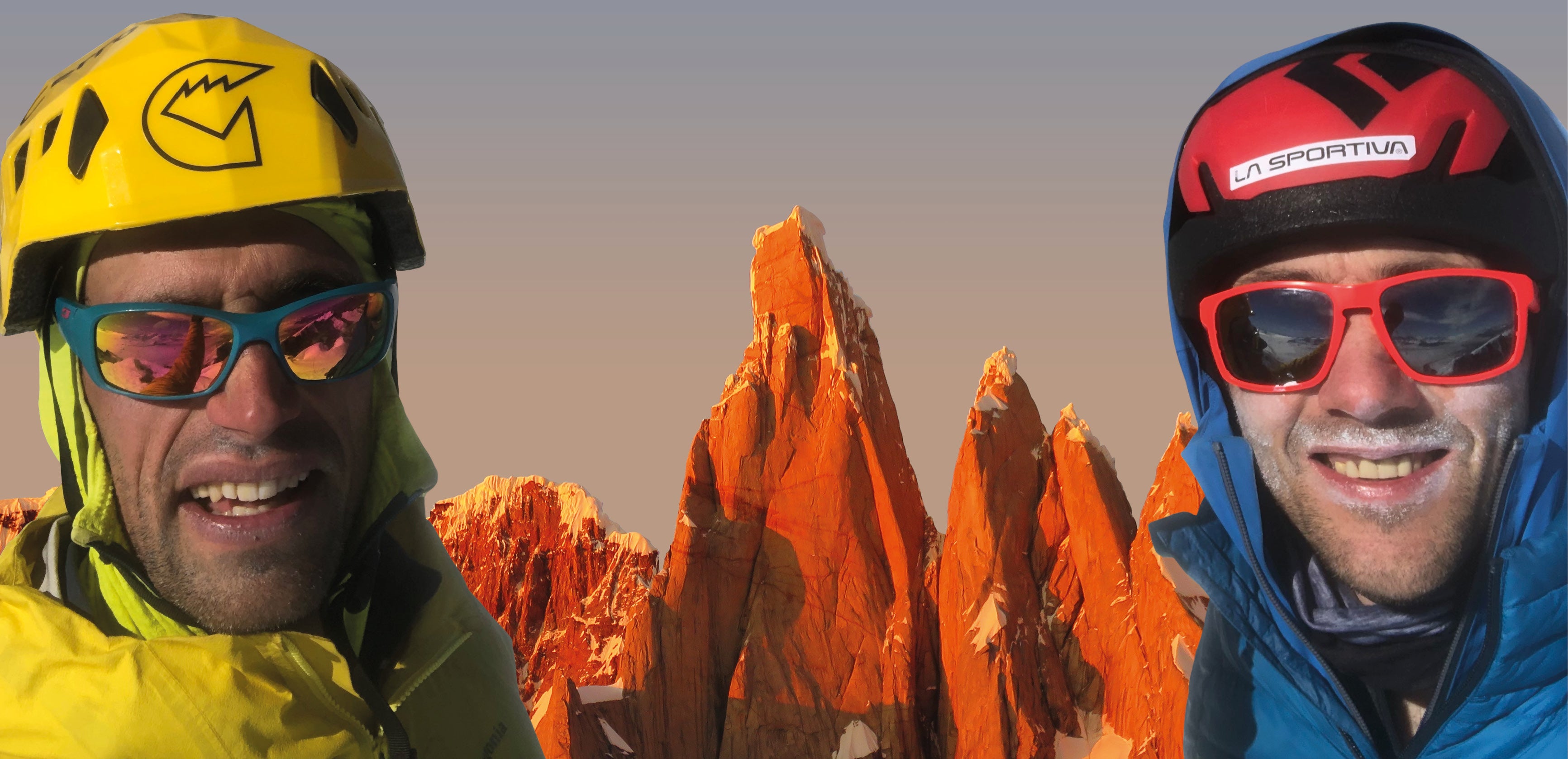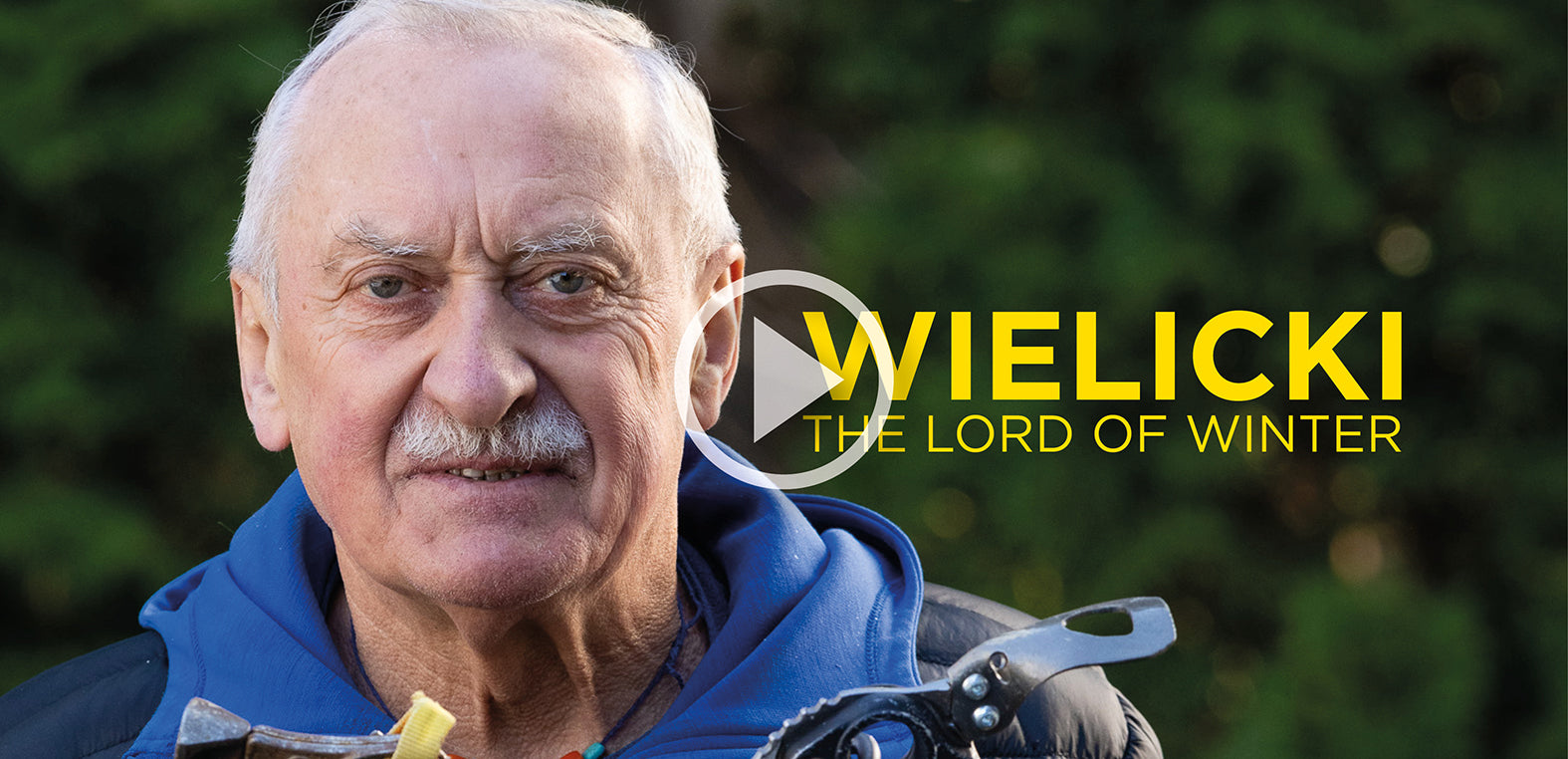
Superleggeri Grivel: the crampons that pushed mountaineering above 8000m by Gian Luca Gasca
Published on 06.05.2022
"They climbed the slope with crampons, without cutting steps - as desirable as they might seem - because they wanted to save energy". Thus the Alpine Journal on the exploits of the Schmid brothers on the north face of the Matterhorn.

It was July 31st, 1931 and they were writing a piece of mountaineering history, on the most coveted face of the moment. It happened after an adventurous bicycle trip to Zermatt and after a couple of long days of observing the aesthetic north face of the Matterhorn, as they call it on the Swiss side.
Once they found the way, they left, leaving a note with names and destinations in a small tent at the foot of the mountain, there were many unknowns. They brought with them a pair of 40-meter ropes, 15 pitons, carabiners, bivouac bags, something for refreshment, ice axes and, of course, two pairs of crampons. Tools born in 1909 at the foot of Mont Blanc and quickly spread on a large scale in the mountaineering world. The first weighed almost a kilo and a half, but the intuition was brilliant. Thanks to these metal spikes fixed under the boots, the tiring and long work of carving the steps in the ice was no longer necessary. The progression could go fast, even if dragging such heavy tools at your feet was still a good task. Let's say that they were suitable for everyone at the time, but not so much for those who were moving in search of performance like the Alpine troops of the Alpine military school of Aosta who in the early Thirties knocked on Grivel's doors with a very specific request: a light crampon, resistant and practical to use to be able to face the newborn Mezzalama ski mountaineering trophy.
Let's say that they were suitable for everyone at the time, but not so much for those who were moving in search of performance like the Alpine troops of the Alpine military school of Aosta who in the early Thirties knocked on Grivel's doors with a very specific request: a light crampon, resistant and practical to use to be able to face the newborn Mezzalama ski mountaineering trophy. A great challenge for the blacksmiths, now famous in the world of mountaineering equipment, who enthusiastically accepted the proposal and began to study. A way had to be found to decrease the thickness of the metal sheets without losing strength.
A great challenge for the blacksmiths, now famous in the world of mountaineering equipment, who enthusiastically accepted the proposal and began to study. A way had to be found to decrease the thickness of the metal sheets without losing strength. So Laurent, Henry Grivel's youngest son, turned to the Cogne steel mills in Aosta who offered him a new super light and resistant alloy, nickel-chromium-molybdenum. In 1933, the soldiers were given crampons weighing only 360 grams per pair, the “Superleggeri Grivel” (Grivel super-light), but this was not enough to see them triumph at the tough Mezzalama, at least until 1935. After that there was no more history and the Alpini dominated the scene.
So Laurent, Henry Grivel's youngest son, turned to the Cogne steel mills in Aosta who offered him a new super light and resistant alloy, nickel-chromium-molybdenum. In 1933, the soldiers were given crampons weighing only 360 grams per pair, the “Superleggeri Grivel” (Grivel super-light), but this was not enough to see them triumph at the tough Mezzalama, at least until 1935. After that there was no more history and the Alpini dominated the scene.
Light and misunderstood, the innovative crampons were ignored by most for some time. Distrustful, the mountaineers did not immediately look with interest at those "fragile" tools. Too thin to give the impression of being stable and safe on ice. Only the strongest were enticed by the idea of trying that innovative lightness. It was then the mountain guide of Courmayeur Arturo Ottoz who came forward and like him also Giusto Gervasutti, the “Fortissimo” (very strong), or Gabriele Boccalatte. But interest in super-light crampons only grew with the advent of very high altitude. 
Understanding human physiology and having tested the fatigue of thin air, mountaineers looked at lightness with new interest. It was no longer just an uphill aid, it was about making progression efficient by saving as much energy as possible. The 1950s thus gave way to the “Superleggeri” (super-light) crampons, which in a short time became protagonists on the highest mountains on Earth. Only the French on Annapurna did not use them, but the time of the 8000ers was still immature when Maurice Herzog and Louis Lachenal reached the highest point of the 10th mountain on Earth. After that they would use them all.
 The British used them on Everest and Kangchenjunga considering them strategic for the success of the two climbs, as demonstrated by a paragraph on an old CAI news bulletin entitled "The Grivel brothers from Queen Elizabeth".
The British used them on Everest and Kangchenjunga considering them strategic for the success of the two climbs, as demonstrated by a paragraph on an old CAI news bulletin entitled "The Grivel brothers from Queen Elizabeth". Amato and Camillo Grivel were the only two foreigners invited to the event organized by the British Alpine Club in the autumn of 1955 to celebrate the victorious expedition capable of breaking the third 8000m peak.
Amato and Camillo Grivel were the only two foreigners invited to the event organized by the British Alpine Club in the autumn of 1955 to celebrate the victorious expedition capable of breaking the third 8000m peak.

A “special treatment reserved for them for having supplied the British expedition with all the climbing equipment and precisely ice axes, pitons and the renowned super-light twelve-point crampons designed by them and now adopted by mountaineers all over the world. Colonel Hunt, head of the Everest expedition, had also turned to the Grivels for the supply of his climbers. The two Grivels were also received by Queen Elizabeth who complimented them for the valuable contribution given to the English victory ".

The two English expeditions used 10-pointed crampons instead of 12. A decision based on the concept of "artificial means" of that time. Those two front points were seen as a trick with which to take advantage in the relationship with the mountain. An idea shared by many purists of the time, such as the Savoyard André Contamine.
An issue that would open the doors to a wide debate regarding the evolution of mountaineering gear. No to two front points, but yes to super light crampons? Shouldn't lightness be considered an artificial aid? Perhaps too much, even for purists. Yet, in some way, these new means allowed innovative achievements in the mountaineering field. Exactly like the frontal points, which appeared in 1929, without which there probably would not have been the first ascent of the north face of Eiger. The fact is that the British reached the top of the world with 10 points and less than 500 grams under their feet.
Those with 12 points were chosen by the Italians of Ardito Desio on K2, even if it was not immediate. In 1953, during a test camp organized at Plateau Rosa, the mountaineers brought crampons of another brand which soon proved to be disappointing.

The story tells that it was the future first ascender of K2 Achille Compagnoni to assert, in the general despair, “In Courmayer there is someone who produces crampons!”. Everyone's eyes lit up and so their gaze fell on the Grivel forge, at the foot of Mont Blanc. Less than a year later they would leave for the difficult K2, wearing super-light steel capable of biting even the ice lashed by the fearsome winds of the Karakorum.
Everyone's eyes lit up and so their gaze fell on the Grivel forge, at the foot of Mont Blanc. Less than a year later they would leave for the difficult K2, wearing super-light steel capable of biting even the ice lashed by the fearsome winds of the Karakorum.
Pictures: Grivel archive
Discover more on the Steel Points in the Grivel Forge
Read the story of The engineer, the crampon and the beast by Marina Morpurgo



